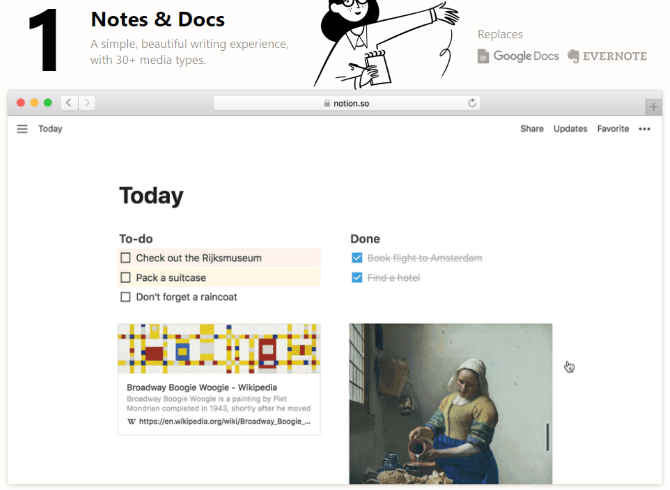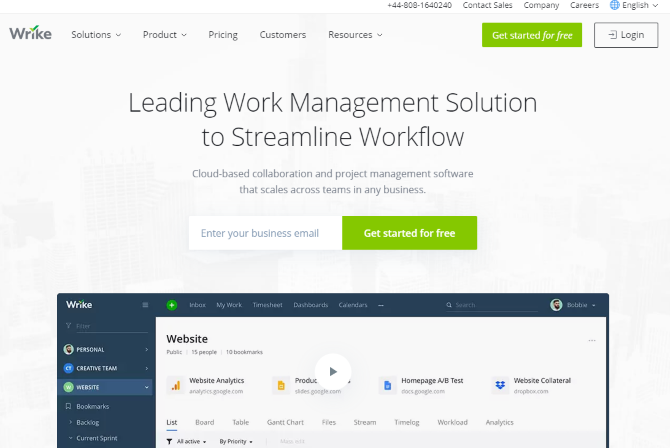You probably know what an operating system is---the underlying software on your computer. It ties software applications and computer hardware together to power the work you do every day.
But what is a Work Operating System (Work OS)? Let's take a look.
"Work OS" Explained
A Work OS is an emerging software category. It is a type of platform that allows teams to plan, run, and track projects, processes, and everyday work.
A dynamic and thriving workplace will have a Work OS used by almost all level of colleagues (even domestic services in some cases). Teams can collaborate across departments and partner organizations.
Meanwhile, managers, team leads, and even executives can use a Work OS. They might use it all in different ways, but with the same aim.
The Features and Benefits of a Work OS
All Work OS systems are different. Ultimately, however, they should be able to handle all (or most) of the following:
- Build and manage work blocks to create workflows for any situation
- Automate workflows to eliminate human error in repetitive tasks and reduce manual work
- Integrate information from external applications, enabling centralized access and analysis to power data-driven decisions
- Data capture, aiding flexibility and improvement across the business
- Data dashboards to communicate different aspects of the same information, depending on role
- Improving work-related asset sharing to save time locating, loading, and collaborating
- Tracking progress of live projects, plus details of completed work
- In-context communication, such as commenting or annotating images from project work
- Controlled autonomy, allowing teams to work to their strengths
At a basic level, Work OS platforms should enable the users to easily adapt to the software. It should save time and enhance collaboration, integrate with multiple external applications, and adapt to any workflow.
Choosing a Work OS Platform
Various Work OS tools, commonly offered with online collaboration as the key feature, are available. monday.com is perhaps the most famous, along with Notion, Asana, Wrike, and others. But which of these offers the best Work OS hub? The following comparison should help.
1. monday.com
The magic of monday.com is how it enables you to plan, organize, and track work from a "single collaborative space." monday.com offers easy onboarding, which is ideal for existing teams and newcomers alike. The tools are provided to customize workflows and create custom dashboards.
Six views track progress: calendar, map, chart, files, Kanban, and timeline. In addition, this Work OS supports integrations with popular major software applications. monday.com provides automation, as well as data imports from relevant software.
monday.com offers a free trial, but this won't be enough for most users. The basic $39 package (based on five users) provides 5GB of storage and activity logged for one week, while the standard $49 package ups this to 50GB for an unlimited duration. The pro package is $79 and adds unlimited storage, logging, sharing, and more.
Huge names such as Hulu, eBay, the BBC, and PayPal use monday.com. Take a look at our overview of monday.com for more info.
2. Airtable
A key competitor of monday.com is Airtable, described as "part spreadsheet, part database, and entirely flexible."
"Airtable blocks" are the key to this tool, enabling the creation of custom workflows. These can cover almost any eventuality. Meanwhile, you can track project progress with five views: grid, calendar, Kanban, gallery, and form.
The free option from Airtable has most of the key features, but skips admin and advanced functionality. You can't unlock these with the $10/month Plus package; instead it increases the records, attachment space, and revision history. For $20 a month, Pro increases these further, while unlocking admin features.
You won't get the advanced toys (largely customization and password-protected shares) without the Enterprise solution. As far as name recognition, Airtable can be found on the systems of 80,000 of the world's leading companies, including BuzzFeed, Box, and Expedia.
3. Asana
Asana is a popular tool among online publishers. It offers six views for team members and project managers alike to rely on. These views (list, board, timeline, calendar, progress, forms) provide all relevant information to the successful completion of projects. Task syncing adds oversight to ongoing work.
Asana also supports time-saving workflow automation, along with app integrations of popular software. Its free package is ideal for individuals and teams stepping into project management for the first time.
For a more comprehensive setup, the Premium $10.99/month package adds advanced features, including an admin console. The Business option super-charges this, adding more features for $24.99.
Nasa and Comcast-NBCUniversal are among the well-known names using Asana.
4. Notion
This is another Work OS platform aimed at helping you and your team "write, plan, collaborate, and get organized."
Notion comes with a bunch of alternatives to software you're already familiar with. Its Notes and Docs apps replace Google Docs and Evernote, while Knowledge Base supplants Confluence and GitHubWiki.
Elsewhere, Tasks and Projects provides alternatives to Trello, Asana, and Jira, with Spreadsheets and Databases replacing Google Sheets and Airtable.
Notion includes customizable workflow blocks, a distraction-free focused interface, Markdown support, text shortcuts and commands, and powerful real-time collaboration. As you might expect, there is support for integrations with your usual tools.
The free option from Notion is limited to 1,000 blocks and 5MB of file uploads. The Personal $4/month package is better for newcomers, with unlimited blocks and uploads.
A Team package at $8/member/month is also available, adding admin tools. Meanwhile, the Enterprise package offers the full Notion experience.
The Wall Street Journal and Reddit are just two of the big brands relying on Notion.
5. Smartsheet
A slightly more linear option is Smartsheet, offering a "flexible work execution platform" with integration support for apps and chat tools.
Users can check progress across four views: Gantt, grid, card, and calendar. Meanwhile, Smartsheet supports a wealth of collaboration options, commenting, and attachments, as well as alerts and forms.
Smartsheet offers critical automations for repetitive tasks as well as interactive reporting tools. It's used by big-hitters Netflix, Cisco, Hilton, and others.
While you can try Smartsheet for free, the Individual package is just $14 a month (billed annually). The Business option is $25/month, adding progress tracking and extended analytics. Enterprise and Premier plans are also available.
6. Coda
Focusing on workflow building blocks and time-saving templates, the company states that "Coda brings all of your words and data into one flexible surface."
It does this by providing customizable views, based on popular apps. This helps with onboarding, making the unfamiliar seem instantly familiar. Meanwhile, Coda offers third-party app integration and detailed project tracking.
Coda has an unusual approach to billing, with only the "Document Maker" coming at a cost. This means that people viewing and editing documents do so at no charge. A free version supports a small number of integrations---this increases with the Pro plan at $10/month. Larger teams will require the $30/month subscription.
Uber, Spotify, and the New York Times all use Coda in their workflows.
7. Wrike
Wrike has positioned itself as a "cloud-based collaboration and project management software that scales across teams in any business." To this end, it boasts real-time reports, block-based project workflows, and the all-important Gantt chart view.
The service supports collaboration, including a useful tagging system for providing feedback. In addition, it packs automation tools along with integrations for the biggest desktop and collaborative tools. These include Google, Box, Microsoft, Adobe, and more.
Wrike offers a scalable service, starting with a free shared task list for small teams of up to five users. There's also a Professional package (for full project planning and collaboration) for $9.80 a month, up to 15 users.
The Business package covers a maximum of 200 users, adding work management, customization, and exec reporting for $24.80 a month. There's also an Enterprise option, with case-by-case pricing. All paid packages start with a free trial.
It's a popular Work OS solution, as Mars, Hootsuite, and even Google use Wrike.
Which Is the Right Work OS for Your Team?
Clearly, the various online collaboration and project management solutions that fall under the "Work OS" umbrella are very similar. You might even have tried some of them.
Finding a new tool for a team-based environment is not easy. It must fulfill the requirements of the project at hand, as well as those that will follow. Integration is vital; automation perhaps less so. Stable collaboration and version control is imperative, while ease of use and intuitive onboarding can save hours of training time.
Each of the solutions above offers those qualities. But on the cusp of the era of the Work OS, who will you trust to deliver yours?
What Makes monday.com the Best Work OS?
Productivity matters more than almost anything else. Having the right tools for the job means that your Work OS will be the efficiency hub you need.
Whether you're overseeing company accounts or project managing a building development, you need a feature-packed Work OS. monday.com offers everything you'll need, while the alternatives provide subsets of features and functionality, to varying degrees.
It's time to embrace the concept of the Work OS and access workflows, track progress, communicate, collaborate, and more all in one place.



